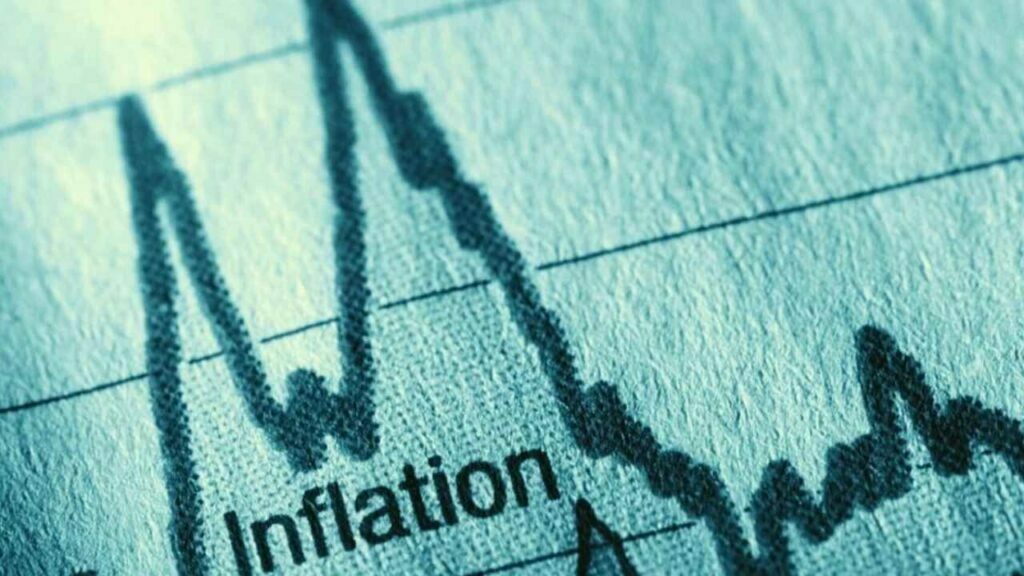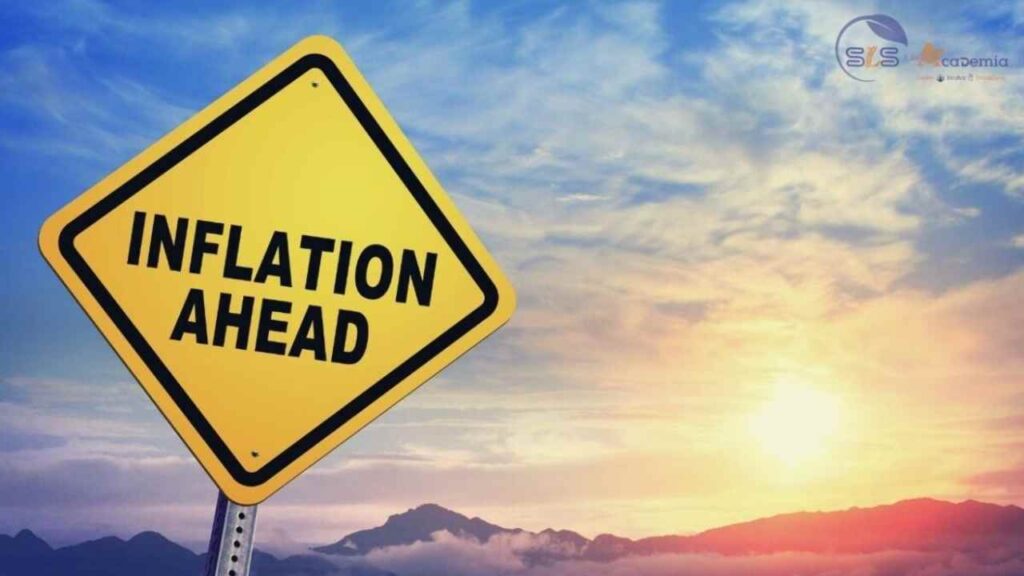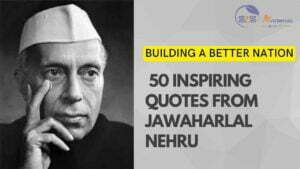What do you mean by Inflation
What do you mean by Inflation ?
Inflation is the rate at which the general level of prices for goods and services is rising. It is typically measured as the percentage change in a price index, such as the Consumer Price Index (CPI) or the Producer Price Index (PPI). When inflation is high, the purchasing power of a country’s currency is low, meaning that the same amount of money can buy less goods and services.
For example, in India, the Reserve Bank of India (RBI) uses the Consumer Price Index (CPI) to measure inflation. In 2020, India’s inflation rate as measured by the CPI was 4.59%. This means that on average, the prices of goods and services consumed by households increased by 4.59% over the course of the year. This can make it more expensive for households to purchase goods and services, which can have a negative impact on their standard of living.
Inflation can be caused by a variety of factors, such as an increase in demand for goods and services, an increase in costs of production, or a decrease in the supply of money. In India, high food prices and an increase in fuel prices have been the main reasons for inflation in recent years.
It’s important to note that, central bank like RBI in India uses a target inflation rate and tries to maintain it within a certain range using monetary policy tools. High inflation can be a sign of an overheating economy, and low inflation can indicate weak economic activity, so central banks must balance the need to keep inflation low with the need to promote economic growth.
Different Types of inflations
- Demand-pull inflation: This occurs when there is an increase in aggregate demand for goods and services, which leads to an increase in prices. This type of inflation can occur when there is a rapid expansion of the money supply, increased consumer spending, or increased government spending.
- Cost-push inflation: This occurs when there is an increase in the cost of production, such as an increase in the cost of raw materials, labor, or energy. This can lead to an increase in prices, as companies pass on the higher costs to consumers.
- Built-in inflation: This occurs when there is a persistent increase in prices built into the economy, such as when wages and prices are inflexible and fail to adjust to changes in supply and demand. This type of inflation can be seen in situations where there are strong labor unions, or when prices are controlled by the government.
- Structural Inflation: This type of inflation is caused by a structural change in the economy like a change in tax laws, change in the labor market, or changes in the monetary policy.
- Hyper Inflation: This type of inflation is characterized by a very high and accelerating rate of inflation, which can lead to a complete loss of confidence in a currency.

Causes of Inflation
There are several causes of inflation, including:
- Demand-supply imbalance: When there is an increase in demand for goods and services that outpaces the supply, it can lead to an increase in prices. This can happen when there is a rapid expansion of the money supply, increased consumer spending, or increased government spending.
- Monetary policy: Central banks use monetary policy to control the money supply and interest rates, and when they increase the money supply, it can lead to inflation. When there is more money in circulation, people and businesses may be more likely to spend, which can drive up prices.
- Cost factors: Inflation can also be caused by an increase in the cost of production, such as an increase in the cost of raw materials, labor, or energy. When the cost of production increases, companies may pass on the higher costs to consumers by increasing prices.
- Structural factors: Inflation can be caused by structural changes in the economy such as changes in tax laws, changes in labor market, or changes in monetary policy.
- Expectations: Inflation can also be caused by people’s expectations. When people expect prices to rise, they may be more likely to buy goods and services before prices increase, which can lead to an increase in demand and higher prices.
Measuring Inflation
- Consumer Price Index (CPI): The Reserve Bank of India (RBI) uses the Consumer Price Index (CPI) to measure inflation in India. The CPI measures the change in prices of a basket of goods and services consumed by households. The basket includes food, clothing, footwear, fuel, and other items. The RBI uses the CPI to measure inflation at the retail level.
- Wholesale Price Index (WPI): The Wholesale Price Index (WPI) measures the change in prices of a basket of goods and services at the wholesale level. It is an indicator of inflation at the wholesale level and can provide insight into the cost pressures faced by producers.
- Producer Price Index (PPI): The Producer Price Index (PPI) is an indicator of inflation at the factory gate or production level. It measures the average change in prices over time of goods and services produced by manufacturers.
- Core inflation: The Reserve Bank of India (RBI) uses a measure called “Excluding Food and Fuel” (XFF) to measure core inflation which excludes the volatile items such as food and fuel prices. It is used to provide a more accurate picture of underlying inflation trends.
It’s important to note that, the Reserve Bank of India (RBI) uses multiple measures of inflation, including the Consumer Price Index (CPI), Wholesale Price Index (WPI) and Producer Price Index (PPI) to get a more complete picture of the inflationary trends in the economy. The RBI monitors these indices to make decisions about monetary policy and to achieve its inflation targets.

Impact of Inflation
The impact of inflation can be significant and can affect various aspects of an economy, including:
- Inflation and purchasing power: High inflation can reduce the purchasing power of a country’s currency, meaning that the same amount of money can buy less goods and services. This can make it more expensive for households to purchase goods and services, which can have a negative impact on their standard of living.
- Inflation and interest rates: Inflation and interest rates are closely related. When inflation is high, central banks will often raise interest rates to try to slow down economic growth and curb inflation. Higher interest rates can make borrowing more expensive and can slow down investment, which can have a negative impact on economic growth.
- Inflation and economic growth: High inflation can negatively impact economic growth by reducing purchasing power, slowing down investment, and making borrowing more expensive. On the other hand, low inflation can indicate weak economic activity and can be a sign of a stagnant economy.
- Inflation and international comparison: Inflation can also affect a country’s international competitiveness. High inflation can make a country’s goods and services less competitive in the global market, while low inflation can make them more competitive. A country with high inflation may also experience a decline in its currency value, making imports cheaper and exports more expensive.

Inflation targeting and Monetary policy
Central bank’s role in controlling inflation: Central banks play a key role in controlling inflation by using monetary policy tools to manage the money supply and interest rates. They set targets for inflation and use various tools to achieve those targets.
How central banks use interest rates and other tools to achieve inflation targets: Central banks use a variety of monetary policy tools to achieve their inflation targets. The most common tool is setting interest rates, when the inflation rate is high, central banks will increase the interest rate to curb inflation, this will make borrowing more expensive, slowing down economic activity and thus reducing inflation. They also use quantitative tools such as open market operations, where they buy or sell government securities in the open market to influence the money supply and interest rates.
The effectiveness of inflation targeting: Inflation targeting is widely considered to be an effective monetary policy framework for controlling inflation. Inflation targeting central banks have been found to be more successful in achieving their inflation targets than those that do not use inflation targeting. However, inflation targeting is not a panacea and it’s effectiveness depends on various factors such as the country’s institutional and political environment, the flexibility of wages and prices, and the effectiveness of fiscal and other structural policies.
In conclusion, inflation is a measure of the average change in prices of goods and services over time. It is a critical economic indicator that can have significant impacts on an economy. There are several ways to measure inflation, including the Consumer Price Index (CPI), the Producer Price Index (PPI), and the Personal Consumption Expenditures (PCE). Central banks play a key role in controlling inflation by using monetary policy tools to manage the money supply and interest rates. Inflation targeting is widely considered to be an effective monetary policy framework for controlling inflation.
In the future, inflation may be affected by a variety of factors such as changes in monetary policy, shifts in global demand and supply, and changes in the cost of production. To mitigate the negative impacts of inflation, it is important for governments and central banks to implement policies that promote economic stability, such as inflation targeting and monetary policy.
In summary, inflation is an important economic indicator that can have significant impacts on an economy. It is important for governments and central banks to monitor inflation and implement policies that promote economic stability to mitigate the negative impacts of inflation.

The Knowledge Hub is intended for a wide range of audiences, including students, professionals, and anyone who is curious about the world and wants to expand their knowledge base. It can be useful for research, education, and personal curiosity. The Knowledge Hub is constantly updated to reflect the latest information and insights, and our visitors are encouraged to check back often for new content. Thank You.
We also have live online classes where we teach 2 courses which are given below. Please go through them and if interested you can take a Free Trial Class.






